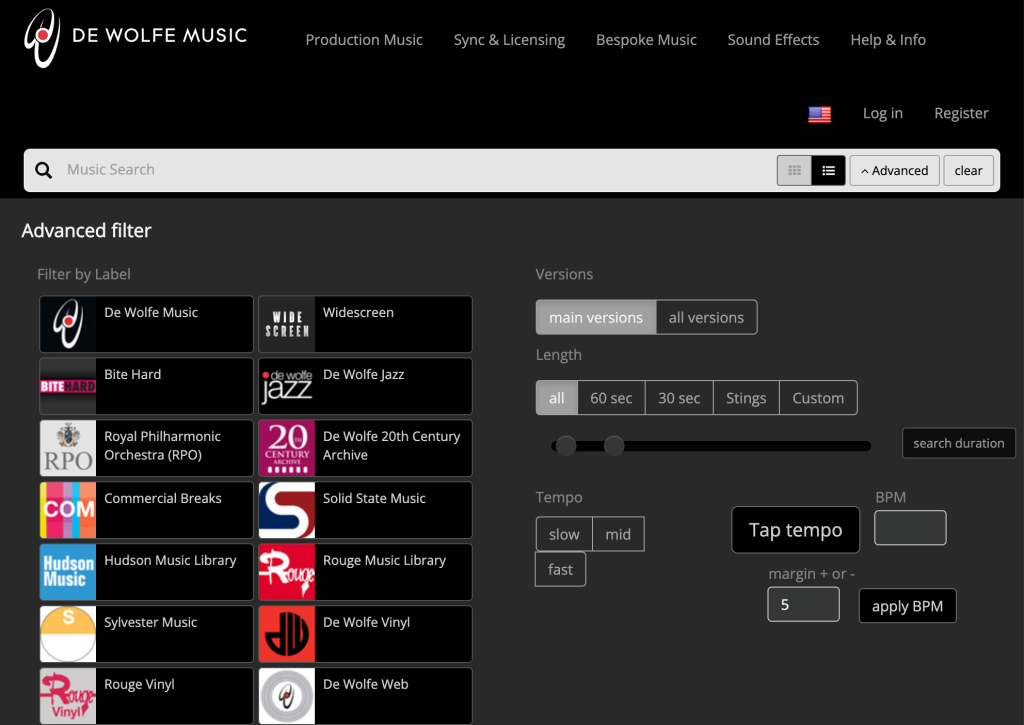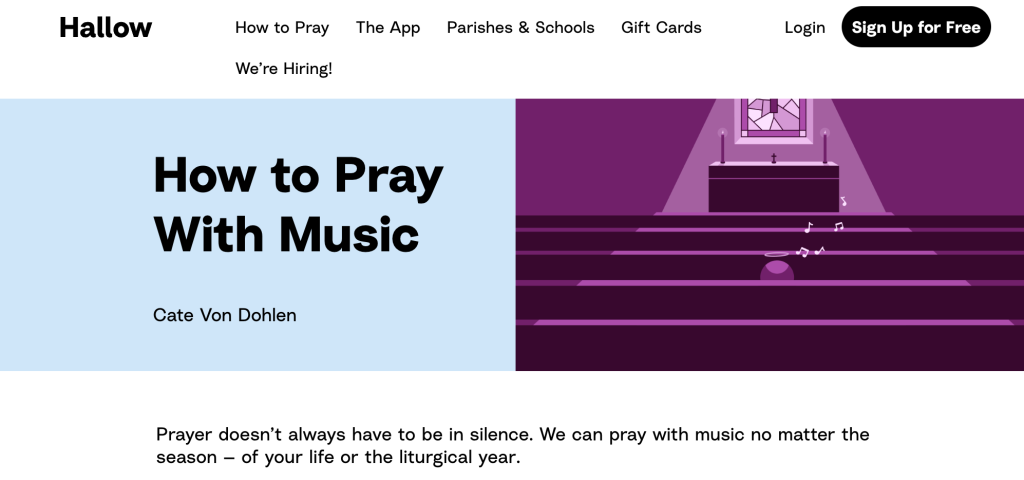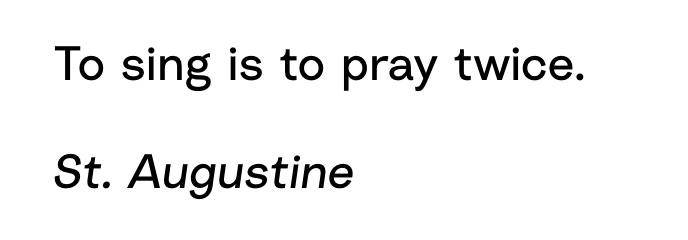A new app proposes musical pieces for personalized prayer.
By Emma Elizabeth Hudkins
We use music in the gym for motivation when lifting, as background music while cooking dinner, and to create a calming atmosphere when studying. Personal devices allow us to carry our soundtracks in our pockets wherever we go. Secular music has offered entertainment, motivation, and background noise to the mundane activities of everyday life. Why not use it for prayer?

The recently launched Hallow App does just that. The app includes a relatively large musical selection for users seeking to develop a personal relationship with God. What is the significance of such a feature and why is it important? Shortly after its creation, Hallow quickly rose to become the number one Catholic app on the market introducing a revolutionary one-stop shop for digital meditation, access to scripture, audio-guided prayer, and curated music. Unlike any other app currently offered, the organization makes use of thousands of different sessions, prayers, and conveniently located resources transforming the concept of accessibility for today’s day and age. User testimonies and countless reviews have supported Hallow including the Bishop of Fort Wayne – South Bend who praises it as an excellent resource for people searching for deeper spiritual lives, especially the younger generation of Catholics today. It helps make clear that a relationship with God is and can be extremely personal and can be a great source of peace, joy, and strength.”
Production music has long been used for soundtracks in films and other commercial purposes . It has evolved from being singularly known as library or stock music for silent film and specific tracks used in television and online services to becoming an integral part of individualized and personalized creative projects. Since the mid-20th century music of this music was known as Muzak: generic pieces that served as background music in workspaces or were piped through speakers in elevators (hence the name “elevator music”) and are now heard in department stores and other commercial spaces everywhere.
Today, however, the highly differentiated online libraries of production music are offered by companies such as De Wolfe or Mood Media, as production music has become pervasive and shaped audiences through movies, TV shows, and social media platforms. Originating during the era of silent film in the early twentieth century, De Wolfe starting with a ‘sound-on-disc’ method, transitioning to the use of vinyl, and now offering a fully online website whose tracks reflect the globalization of the music business and ease of searching for specific musical tracks for unique desired purposes of media clients all over the world.

While this commercial use of music for specific purposes has been a business model for more than a century, the intersection of technology and spirituality is a new concept. This connection is made easy as it is found on an app on a smartphone. In an age of digitization, the Hallow app provides users with the power to take their faith lives into their own hands, physically – making a use of the device that occupies so much of our population’s time and making use of the universal power of music to better our lives and serve our souls. “Pray”, “Sleep”, and “Meditate”—the variety of music offered within the Hallow app helps to facilitate these actions from the effortless touch of the play button.
Selections are “catholic” indeed: they Gregorian chants, traditional hymns, and instrumental soundtracks are designed for different prayer activities. Whether sitting in a Holy Hour or jumpstarting the day with a morning prayer routine, this category of songs are intended to aid people not just in prayer, contemplation, and reflection, but also help do daily activities with devotion. Not much different than learning the alphabet through an extremely catchy and memorable tune, familiar musical styles can bring back fond memories of going to church with the family or hearing the same closing song at the end of mass. Music can invoke memories through the targeted use of these specific genres of traditional and more modern ‘Church’ soundtracks. Noah Bongiovanni, a graduate of Notre Dame and Hallow employee, emphasized that, “music has a unique ability to invoke emotion in the human spirit – [that] is something the Church has recognized for thousands of years”.

Numerous research studies have revealed that music has the potential and power to be an effective treatment for emotional instability. In a clinical trial facilitated by Katie Bautch, it was observed that therapeutic music playlists had positive effects and a high impact on decreasing multiple types of anxiety. Her study tabulated whether curated playlists based on the variety of musical styles and genres affected levels of anxiety in participants, specifically looking in depth at brain activity. Bauth states, in regards to the content of the music within these specific playlists that, “Structural components of the music refer to characteristics that are inherent to the music itself. These include things such as tempo, instrumentation, and pitch.” It would make sense that in the world today, music can be used as a powerful tool to combat, soothe, or overcome feelings when one is amid adversity facing death, loss, illness, or loneliness.
Research conducted by Makoto Takeuchi, Soichiro Morishita, and Yukie Sano reveals that there is an internal expectation from an individual when selecting songs for a playlist, that they are simultaneously constructing part of their identity. Many factors play a role in this recognition as personal playlists are unlimited and available at, “a low-cost means of song discovery.” Evidently, tailored ‘praylists’ on Hallow allow for one to design their personalized style of communication with God. The variety of Catholic influenced music allows for a more diverse group of users as there is a soundtrack that aligns with church for everyone. In that spirit, Hallow also offers music that is catered to conjure a peaceful environment for the soul. For example, the Catholic Lofi playlists promote stillness and peace in one’s life. The calming music improves internal reflection. Hallow harnesses these musical benefits for relaxation of not only the body but also the mind. A study done by John E. Lothes II, Sara Matney, and Zayne Naseer illustrated that both mindfulness and music mediation reduced levels of overall anxiety in a random college student population. The availability of ambient sounds and soothing melodies encourages the slowing down contemplation in the context of one’s faith, a practice that can calm a restless mind, one much like the one of an overloaded 19 year old.
Everyone has a rhythm of life – a disguised cyclical nature of a daily routine of needs, desires, and stages of emotions. Not too different, a similar cycle takes place in the Catholic church known as the Liturgical Year. It is an organization of the church calendar that structures worship and spiritual life throughout the year. Currently, as Christmas nears, the Catholic church is in the Advent season of the Liturgical Year. Fun and festive music choices such as Ben Rector’s versions of Christmas classics or tunes performed by the Bocelli Fam can be accessed. In the words of Bongiovanni, “While those songs may not create an environment of contemplative prayer per se, they lift the spirit towards feelings of joy, which is an expression of glory to God.”

The Hallow App has revolutionized the way we approach spirituality; it challenges the rigid stereotype of isolated, individual prayer as the only way to pray. Instead, through Hallow, one joins a community around the world that is listening to the same sessions concurrently while still maintaining their own individualized experience through expressed preferences. There is a union of users fostered through the use of music that pursues inner peace and spiritual growth. Hallow successfully harnessed the profound impact of music in our world to elevate our personal prayer and meditation experience.
Who knew that prayer could start with the push of a play button?